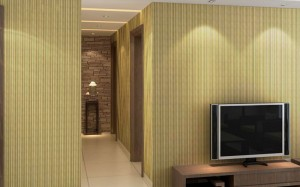Generally, there are several methods for sound-absorbing treatment in multi-function halls, among which the more common is to use wooden sound-absorbing panels to absorb sound and reduce noise. The multifunctional halls are mostly gathering places for important meetings, theatrical performances or lectures, and can integrate multiple functions such as theaters and lecture halls. In the design of the multifunctional hall, it is necessary to organically combine engineering, acoustics and aesthetics as much as possible to present a beautiful, comfortable and gathering space that meets people’s needs.
The multi-function hall is characterized by large space, more seats in the auditorium, simple equipment, and complex functions. It must be able to show movies and perform plays; it must be able to give lectures, but also to hold concerts and cultural performances; Both electric sound and natural sound must be considered when necessary. The requirements for sound are relatively high, and the multi-function hall must avoid the introduction of outdoor noise and the transmission of indoor sound to ensure that indoor and outdoor sounds do not affect each other. This puts forward acoustic decoration and sound absorption and sound insulation in indoor acoustic design. Require. The acoustic design of the multifunctional hall must be closely cooperated and coordinated by acoustic engineers and architects. The multifunctional hall with good sound quality must be the crystallization of collective cooperation.
The sound absorption treatment methods of the multifunctional hall mainly include the following aspects:
1. Reasonable configuration: The general layout of the building and the reasonable configuration of each room are designed to prevent external noise and auxiliary rooms from interfering with the main listening room.
2. Determine the volume: On the premise of meeting the requirements of use, determine the reasonable room volume and the volume of each seat. For the indoor acoustic design, including the selection of the seat materials of the multi-function hall, the arrangement of the location, the design of the shape of the multi-function hall, etc., rigid factors should be considered in the design of the multi-function hall. Tiange Acoustics recommends the use of decorative wooden sound-absorbing panels to improve the acoustics of the multi-function hall.
3. Through the body shape design, make full use of the effective sound energy, so that the reflected sound is reasonably distributed in time and space, and prevent acoustic defects. A very important aspect of the acoustic design of a multifunctional hall is that the sound field distribution should be as uniform as possible. For the auditorium far away from the sound source, the energy obtained is relatively small, and it is necessary to distribute the transmitted sound energy to the auditorium more.
4. Determine the appropriate reverberation time and frequency characteristics according to the requirements of use, calculate the sound absorption in the hall, and select sound-absorbing materials and structures.
5. Calculate the indoor sound pressure level according to the space situation and the sound power of the sound source, and decide whether to use an electro-acoustic system.
6. Determine the allowable indoor noise standard, calculate the indoor background sound pressure level, and determine which noise control measures to adopt.
Post time: Dec-15-2021





